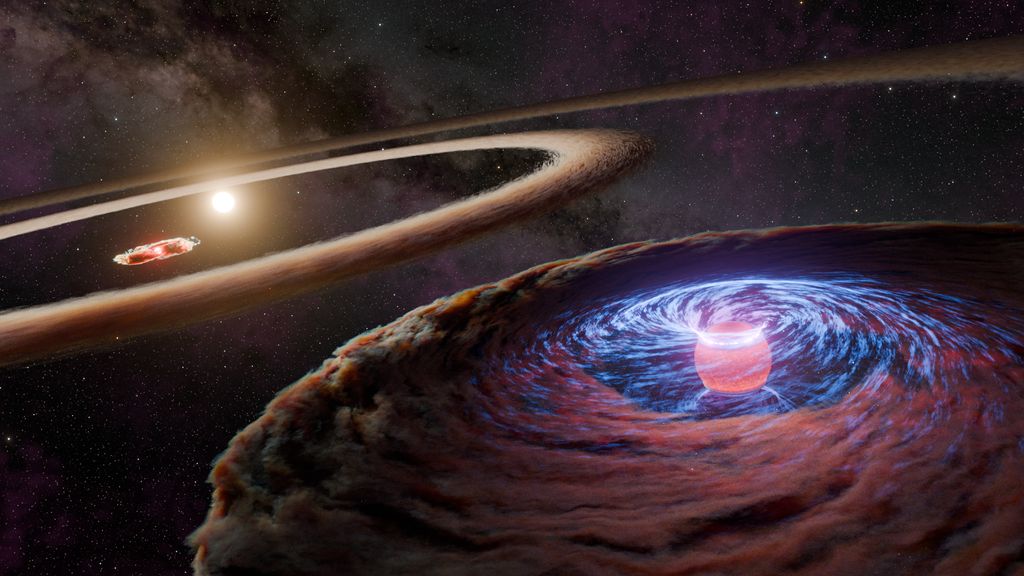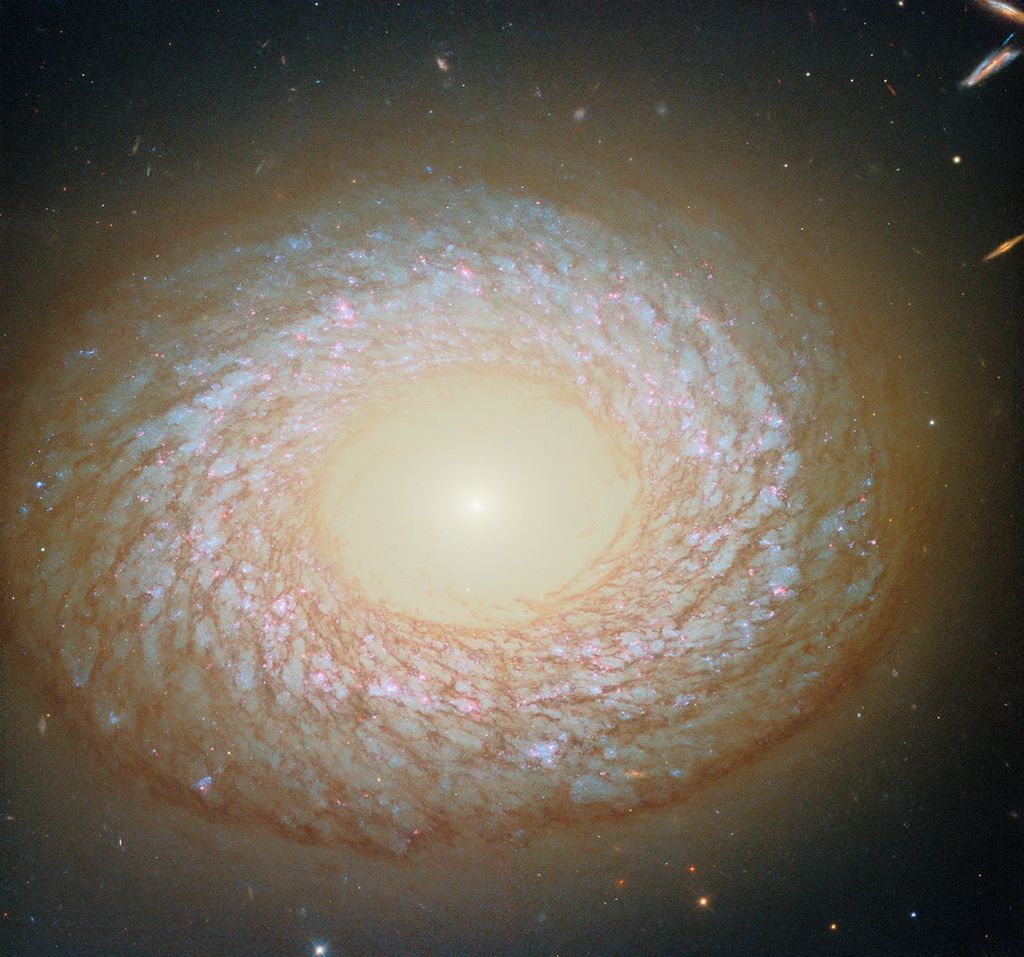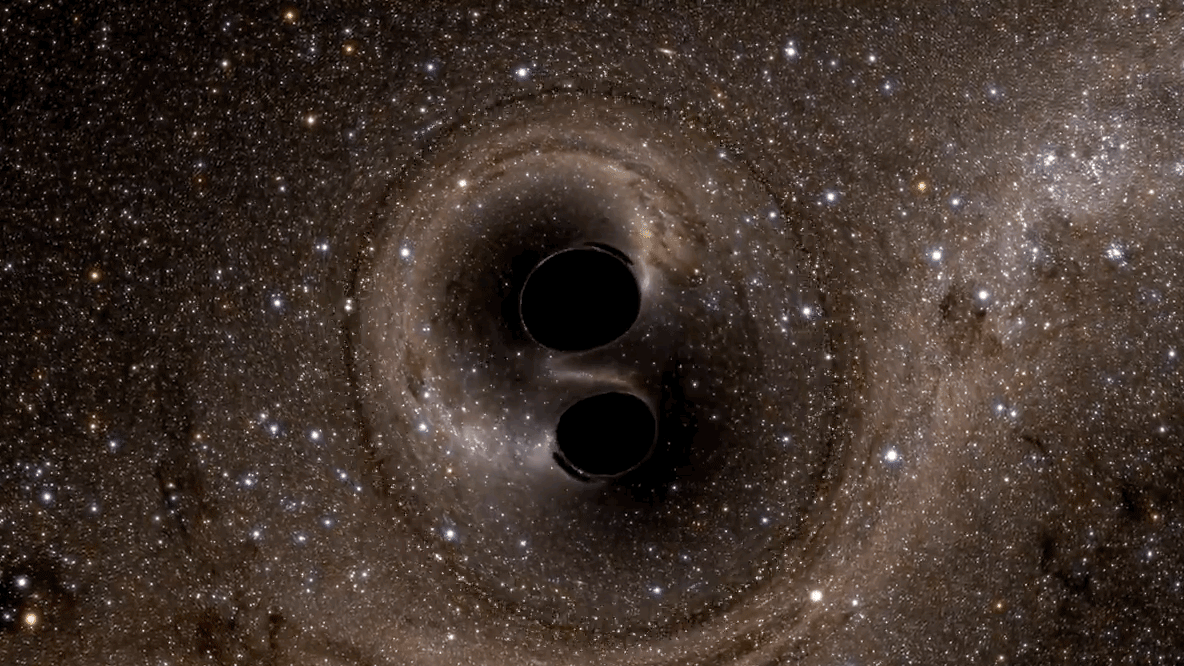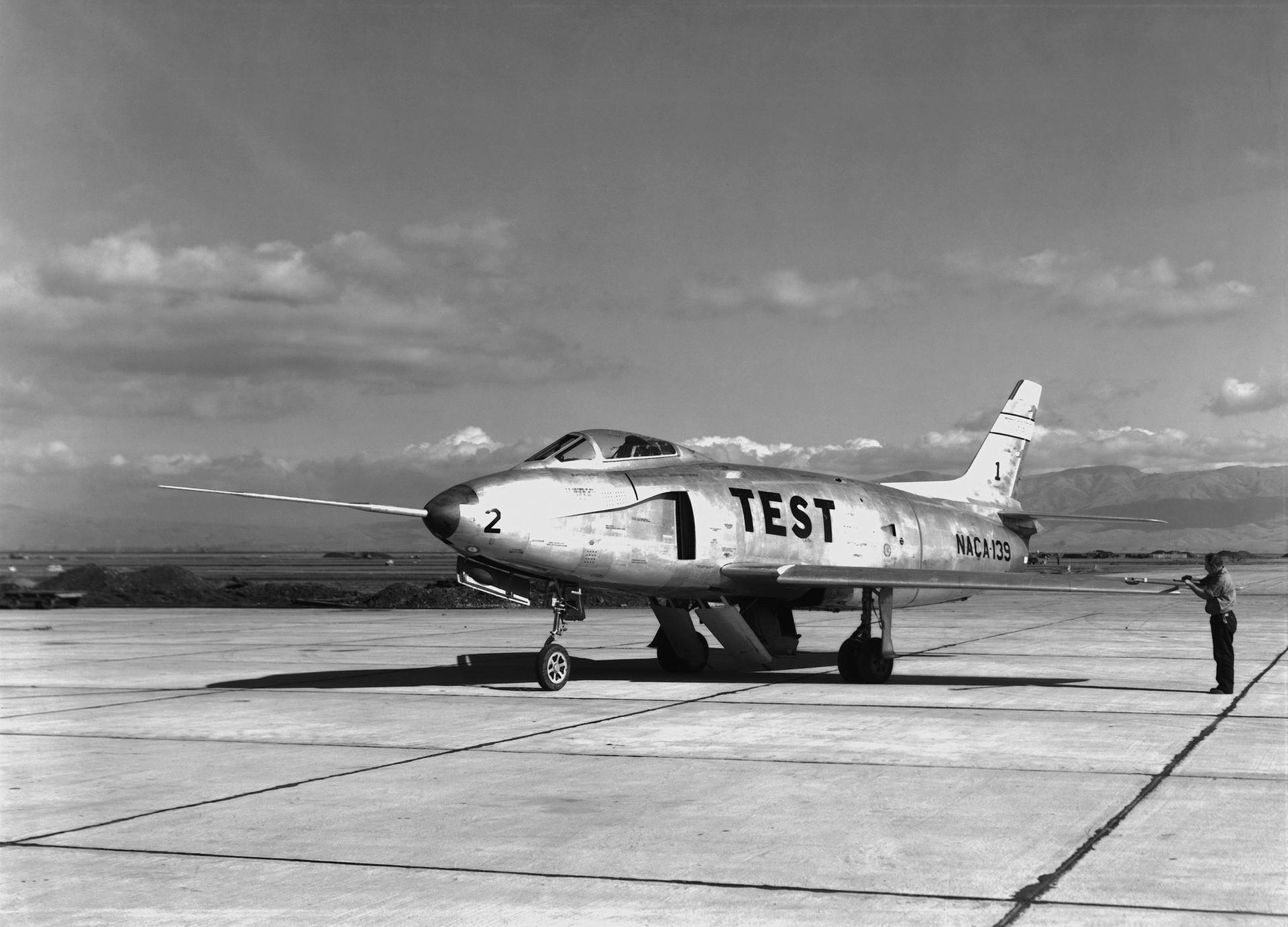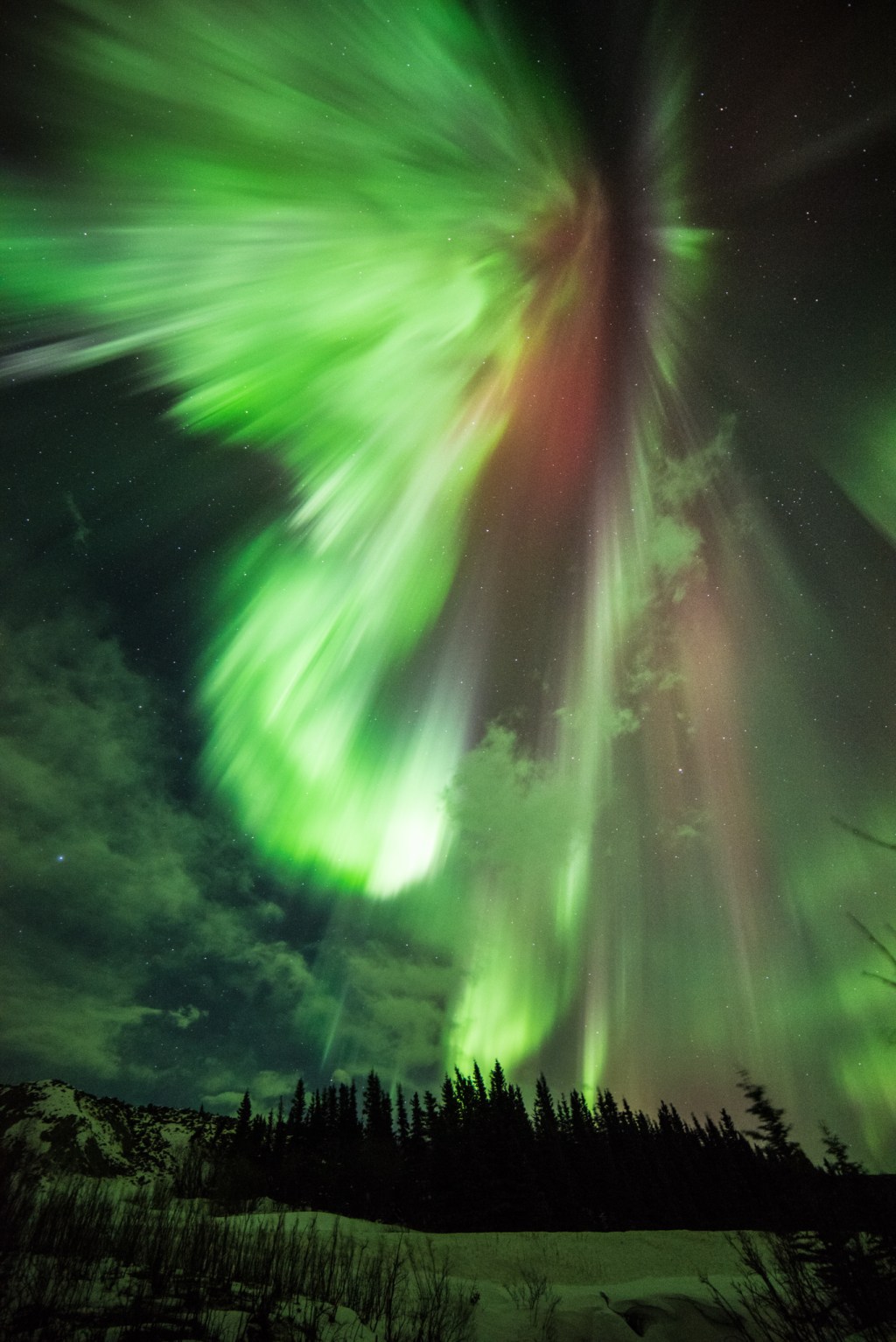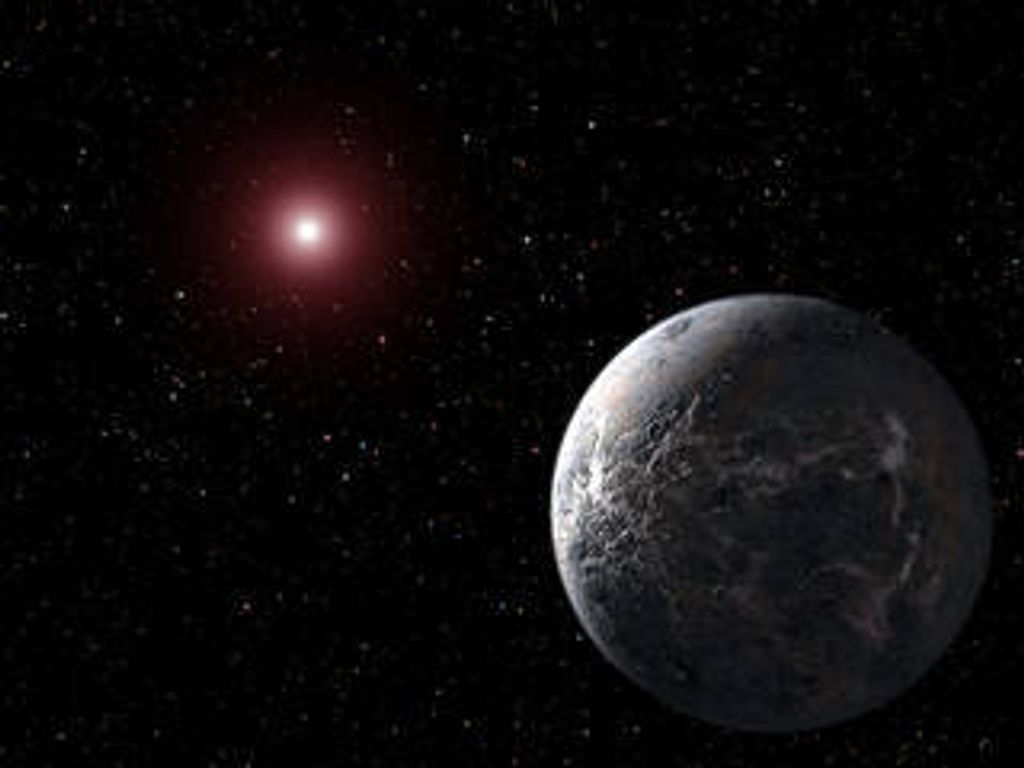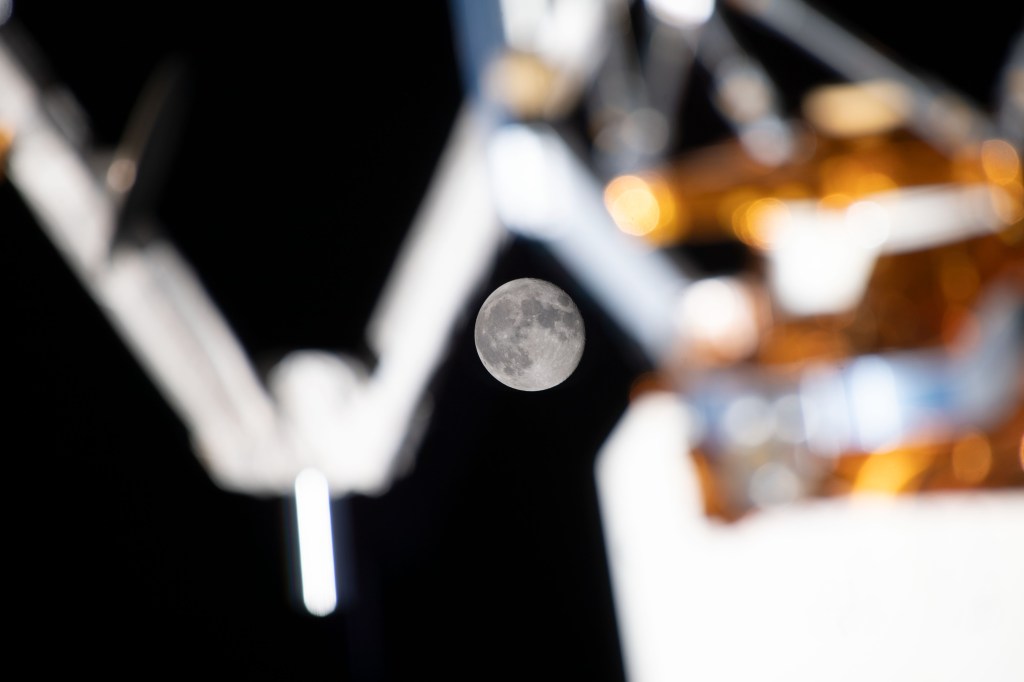1 min read
Collision Sequence for a Magnetar-Powered Kilonova Blast Illustration

This illustration shows the sequence for forming a magnetar-powered kilonova, whose peak brightness reaches up to 10,000 times that of a classical nova. 1) Two orbiting neutron stars spiral closer and closer together. 2) They collide and merge, triggering an explosion that unleashes more energy in a half-second than the Sun will produce over its entire 10-billion-year lifetime. 3) The merger forms an even more massive neutron star called a magnetar, which has an extraordinarily powerful magnetic field. 4) The magnetar deposits energy into the ejected material, causing it to glow unexpectedly bright at infrared wavelengths.
- Release DateNovember 12, 2020
- Science ReleaseNASA’s Hubble Sees Unexplained Brightness from Colossal Explosion
- Credit
Related Images & Videos
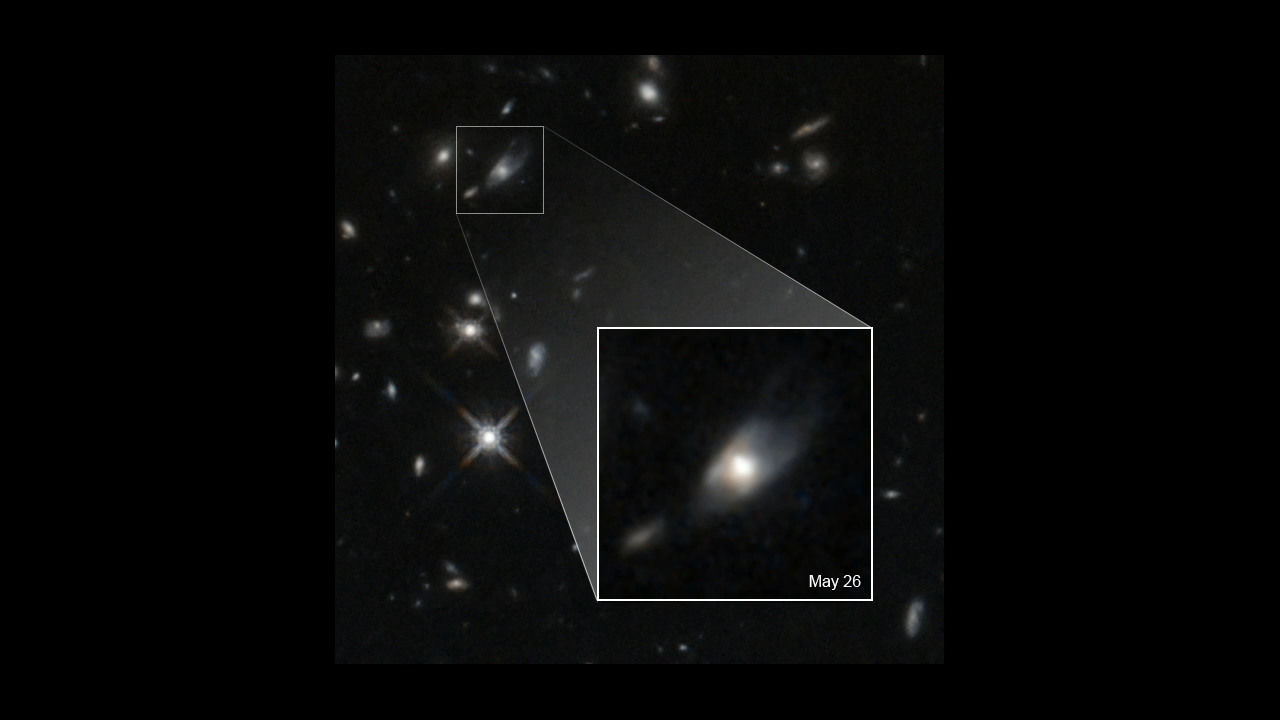
Kilonova Fade-out
These two images taken on May 26 and July 16, 2020, show the fading light of a kilonova located in a distant galaxy. The kilonova appears as a spot to the upper left of the host galaxy. The glow is prominent in the May 26 image but fades in the July 16 image. The kilonova's peak...
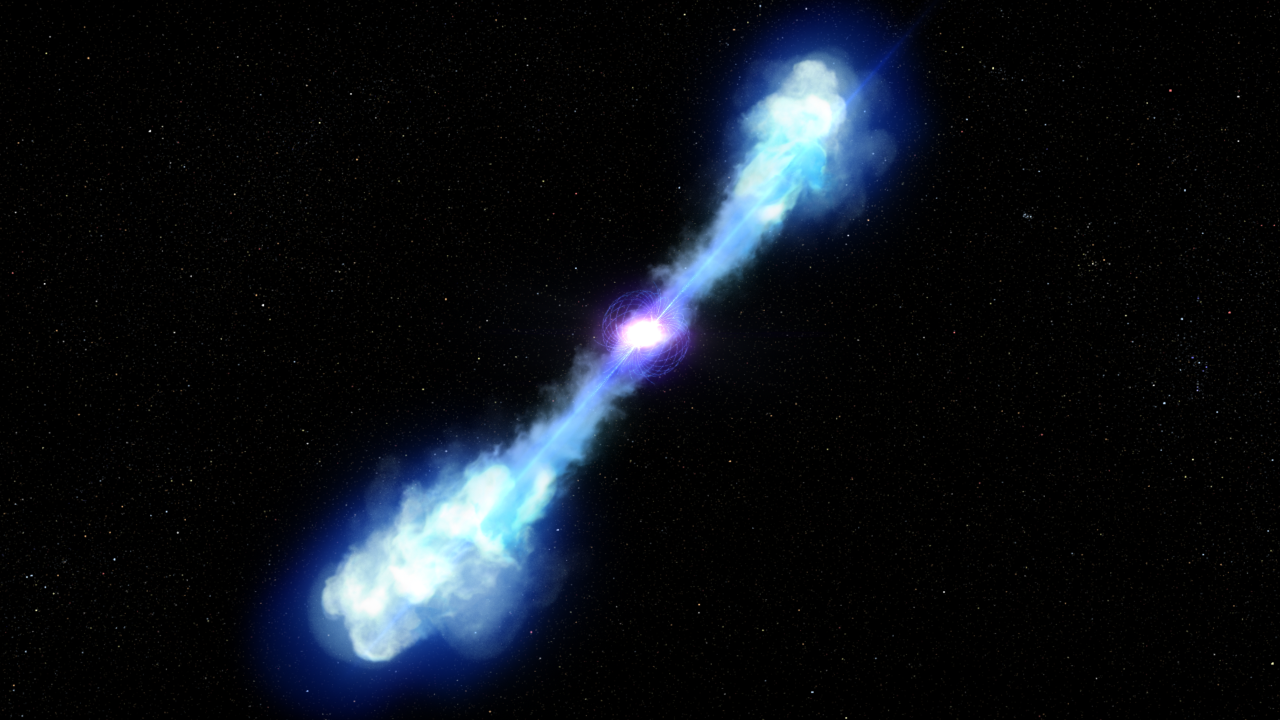
Magnetar-Powered Kilonova Blast
This animation shows the sequence for forming a magnetar-powered kilonova, whose peak brightness reaches up to 10,000 times that of a classical nova. In this sequence, two orbiting neutron stars spiral closer and closer together before colliding and merging. This triggers an...
Share
Details
Claire Andreoli
NASA’s Goddard Space Flight Center
Greenbelt, Maryland
claire.andreoli@nasa.gov

